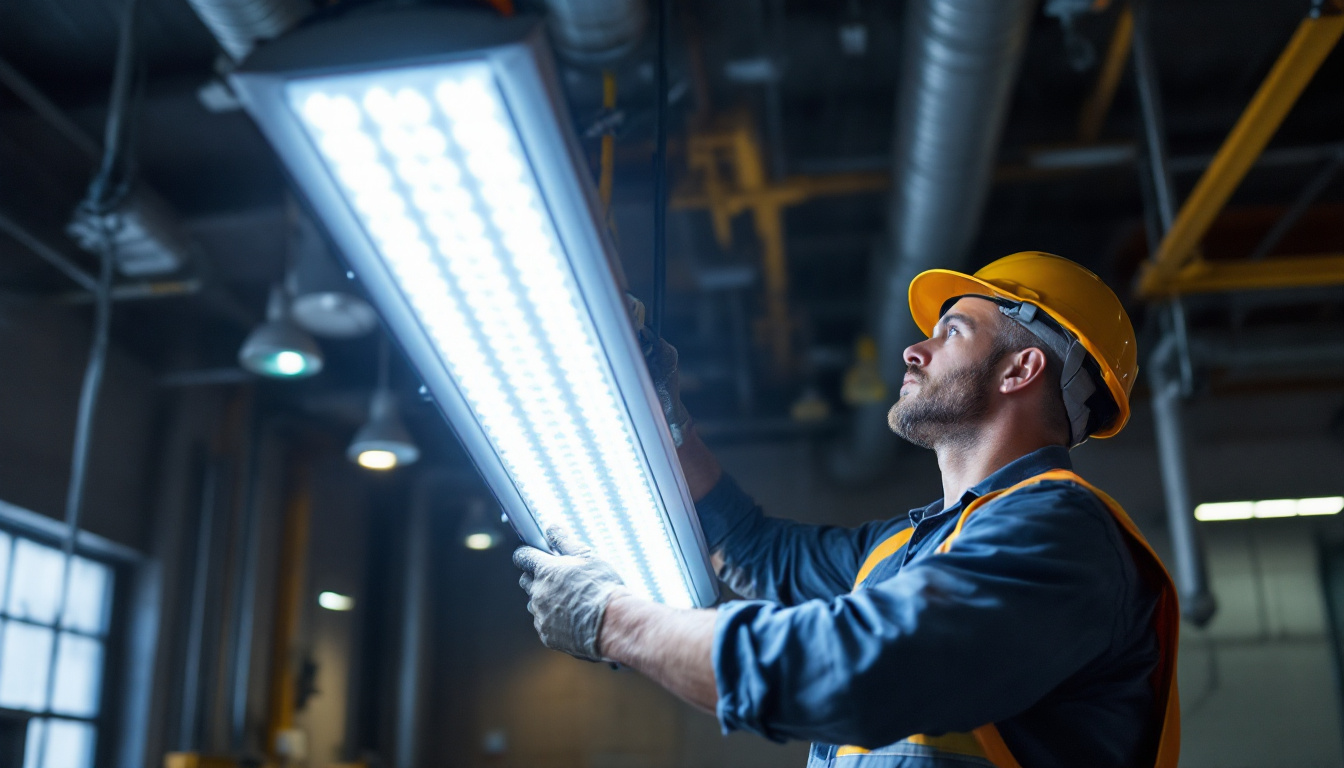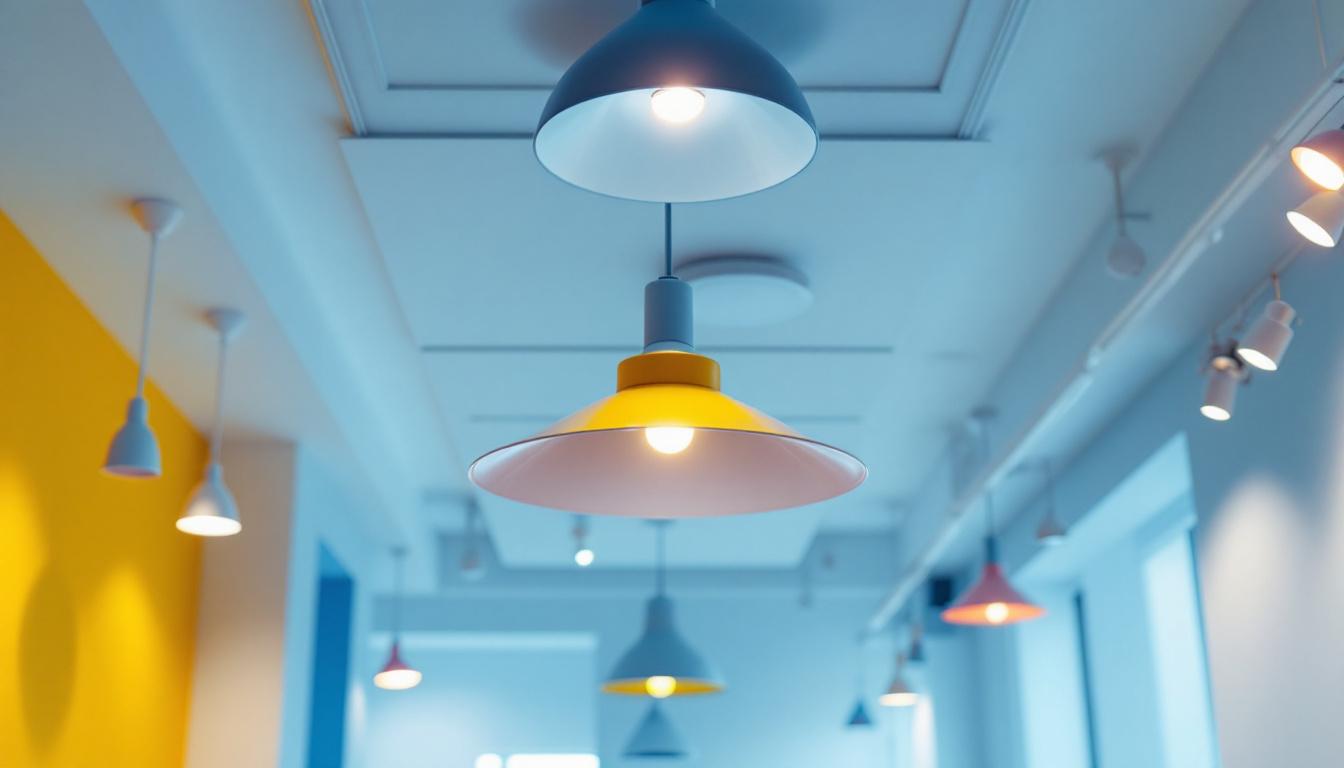
In the world of commercial lighting, LED shop lights have become a popular choice among contractors for their energy efficiency, longevity, and versatility. However, with various options available on the market, many contractors have questions regarding the specifics of 4-foot LED shop lights. This article aims to address some of the most common inquiries lighting contractors encounter when working with these fixtures.
LED shop lights are specialized lighting fixtures designed for use in workshops, garages, and commercial spaces. They utilize light-emitting diodes (LEDs) as their light source, which offers several advantages over traditional fluorescent or incandescent bulbs. These fixtures are typically available in various lengths, with 4-foot models being particularly popular due to their balance of size and light output.
The design of LED shop lights often includes features such as integrated reflectors for improved light distribution and durable materials that withstand the rigors of a workshop environment. Additionally, many models are designed for easy installation, making them ideal for both new constructions and retrofitting existing spaces. Some advanced models even come with motion sensors or dimming capabilities, allowing users to customize their lighting experience based on the task at hand or the time of day.
One of the primary benefits of LED shop lights is their energy efficiency. Compared to traditional lighting solutions, LEDs consume significantly less power, translating to lower energy bills. Moreover, they have a longer lifespan, often lasting up to 50,000 hours or more, which reduces the frequency of replacements and maintenance costs. This longevity not only helps save money but also minimizes waste, making LED shop lights a more environmentally friendly option.
Another advantage is the quality of light produced by LED fixtures. They provide bright, clear illumination that enhances visibility in workspaces, improving safety and productivity. Many LED shop lights also offer options for color temperature, allowing contractors to choose between warm or cool light depending on the specific needs of the environment. The ability to select different color temperatures can significantly affect mood and focus; for instance, cooler temperatures are often preferred for detailed tasks, while warmer tones can create a more inviting atmosphere in areas where people gather. Furthermore, the instant-on feature of LED lights means there is no warm-up time, providing immediate illumination when needed, which is especially beneficial in busy workshop settings where time is of the essence.
Installing a 4-foot LED shop light can be straightforward, especially with models designed for easy mounting. Typically, the installation process involves securing the fixture to the ceiling or wall using brackets or hooks, connecting the electrical wiring, and ensuring the fixture is properly grounded. It is essential to follow the manufacturer’s instructions for installation to ensure safety and optimal performance.
For contractors, it is crucial to assess the workspace before installation. Consider the layout of the area, the height of the ceilings, and the desired light distribution. Proper placement of the fixtures can significantly affect lighting quality, so planning is key. Additionally, it is beneficial to take into account the color temperature of the LED lights, as this can influence the ambiance of the workspace. For instance, a cooler color temperature (around 5000K) is often preferred in work environments for its daylight-like quality, which can enhance focus and productivity.
To install a 4-foot LED shop light, a few basic tools are typically required. These may include a drill, screwdriver, wire strippers, and a voltage tester. Depending on the specific installation method chosen, additional tools such as a ladder or a level may also be necessary. Ensuring that all tools are on hand before starting the installation can help streamline the process. It’s also wise to have a measuring tape available to ensure that the fixtures are evenly spaced and aligned, which contributes to a professional-looking installation.
Contractors should also prioritize safety by using personal protective equipment (PPE) such as gloves and safety glasses during installation. Additionally, turning off the power supply at the circuit breaker before beginning any electrical work is essential to prevent accidents. It may also be helpful to have a partner assist during the installation, especially when lifting heavier fixtures or holding them in place while securing them. This not only makes the job easier but also enhances safety by providing an extra set of hands to manage tools and materials effectively.
When selecting a 4-foot LED shop light, several key features should be considered. First, look for the lumen output, which indicates the brightness of the fixture. A higher lumen output is generally more desirable for workspaces that require excellent visibility. For instance, a shop light with a lumen output of 4,000 to 5,000 lumens is ideal for garages or workshops where detailed work is performed, ensuring that every corner is well-lit and reducing the likelihood of accidents.
Another important feature is the color temperature of the light. LED shop lights are available in various color temperatures, typically measured in Kelvin (K). A cooler color temperature (5000K and above) is often preferred for workspaces, as it mimics daylight and enhances focus and visibility. Conversely, warmer temperatures (below 3000K) can create a more relaxed atmosphere, which might be beneficial in areas where comfort is prioritized over task-oriented lighting. Additionally, consider the color rendering index (CRI) of the light, which measures how accurately colors appear under the light compared to natural sunlight. A CRI of 80 or above is recommended for most work environments, ensuring that colors are perceived accurately.
Many modern LED shop lights come with dimmable capabilities, allowing contractors to adjust the brightness according to the specific needs of the workspace. Dimmable lights can help create a more comfortable environment, especially in areas where tasks may vary in intensity throughout the day. For example, during detailed assembly work, a brighter setting may be necessary, while a softer light may be more suitable for general cleanup or maintenance tasks.
When selecting dimmable options, it is essential to ensure that the compatible dimmer switch is used, as not all dimmers work with LED technology. This compatibility is crucial to avoid flickering or other performance issues. Many manufacturers provide guidelines on which dimmers are best suited for their products, and investing in a high-quality dimmer can enhance the overall lighting experience. Furthermore, some advanced models offer smart technology integration, allowing users to control brightness through mobile apps or voice commands, adding a layer of convenience and modernity to your workspace lighting.
LED shop lights are significantly more energy-efficient than traditional fluorescent or incandescent lighting. For instance, while a typical fluorescent bulb may consume around 32 watts, an equivalent LED shop light can produce the same amount of light using only about 18 watts. This reduction in energy consumption leads to substantial cost savings over time.
Additionally, the long lifespan of LED lights means fewer replacements, further contributing to savings. Contractors can offer clients a compelling argument for switching to LED technology based on both environmental benefits and financial savings.
Many regions offer incentives for businesses that invest in energy-efficient lighting solutions. These incentives can come in the form of rebates, tax credits, or grants. Contractors should be aware of local programs that can help clients offset the initial investment in LED shop lights.
Furthermore, energy-efficient lighting can contribute to a building’s overall sustainability rating, which is becoming increasingly important in commercial real estate. By promoting LED shop lights, contractors can help clients achieve their sustainability goals while also enhancing their bottom line.
While LED shop lights are generally reliable, some common issues may arise during their use. One frequent problem is flickering, which can occur due to incompatible dimmer switches or fluctuations in the electrical supply. Ensuring that the correct dimmer is used and checking the electrical connections can often resolve this issue.
Another common concern is a decrease in brightness over time, known as lumen depreciation. While LEDs do not burn out like traditional bulbs, they may lose brightness gradually. Regular maintenance and timely replacements can help maintain optimal lighting conditions in the workspace.
To maximize the lifespan of LED shop lights, proper installation and usage are essential. Ensuring that fixtures are not exposed to extreme temperatures or humidity can help prevent premature failure. Additionally, using compatible dimmers and avoiding overloading circuits can contribute to the longevity of the lights.
Regular cleaning of the fixtures is also important, as dust and debris can accumulate and diminish light output. Contractors should recommend periodic maintenance checks to ensure that the lighting system continues to perform effectively.
As LED shop lights continue to gain popularity in commercial settings, understanding their features, installation, and maintenance is crucial for lighting contractors. By addressing common questions and concerns, contractors can better serve their clients and ensure successful lighting projects.
From energy efficiency to troubleshooting, the insights provided in this article can help contractors make informed decisions when selecting and installing 4-foot LED shop lights. Embracing these modern lighting solutions not only enhances workspaces but also contributes to a more sustainable future.
In the competitive field of lighting design and installation, staying informed about the latest technologies and best practices is essential. By prioritizing quality and efficiency, contractors can build a reputation for excellence and reliability in the industry.
Ready to elevate your lighting projects with the best in LED shop lights? Look no further than LumenWholesale, where we provide contractors with the highest quality, spec-grade lighting solutions at unbeatable wholesale prices. Say goodbye to local distributor markups and hello to our extensive selection that meets rigorous industry standards. With LumenWholesale, you can enjoy the convenience of bulk buying with free shipping, ensuring you get premium lighting at the best value — every time. Don’t compromise on quality or cost; choose LumenWholesale for reliable, high-performance lighting that enhances every workspace. Wholesale Lighting at the Best Value is just a click away.

Discover the essentials of 8 ft LED lighting in just 5 minutes! This concise guide is tailored for lighting contractors, offering insights into installation, efficiency, and cost-effectiveness to enhance your projects..

Discover why purchasing construction and portable lighting in bulk from local distributors might not be the best choice.

Discover innovative strategies to future-proof your outdoor lighting projects.

Discover how light fixtures for drop ceilings can transform your lighting installation projects.